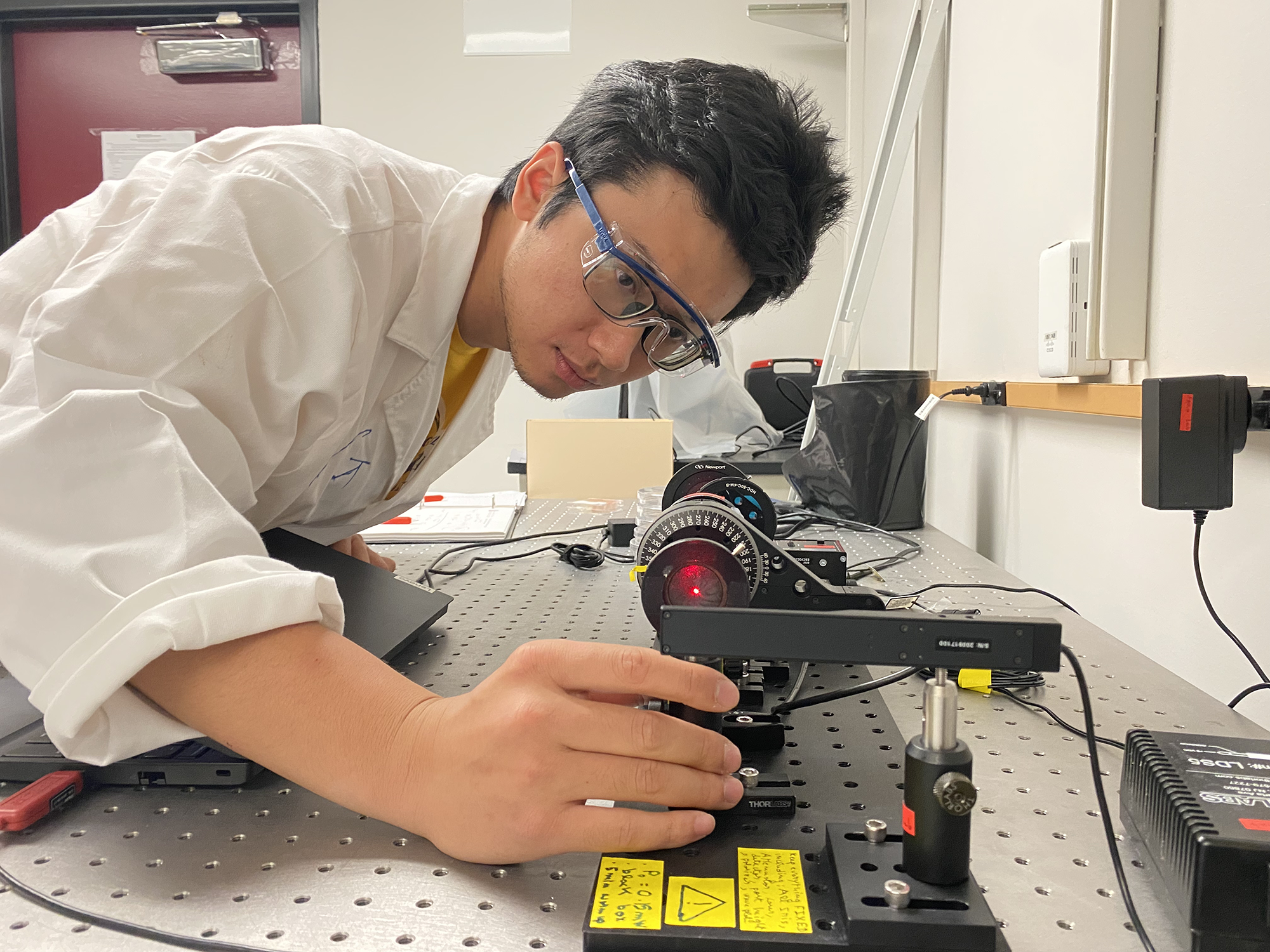University of Utah electrical and computer engineering Ph.D. student Jichao Fan recently co-authored a paper, “Wafer-Scale Full-Coverage Self-Limiting Assembly of Particles on Flexible Substrates,” accepted to be published in Applied Materials and Interfaces Journal. This work is a collaborative effort led by researchers at Villanova University. Fan joined professor Weilu Gao’s lab in Fall of 2021 and has been working with him on this research for the past year.
In nanomanufacturing processes, self-limiting assembly and controllability of particles is important when dealing with applications requiring delicate thickness of particle layers. Until recently, this self-limiting assembly has only been successful on rigid substrates and could not achieve a uniform assembly of particles on flexible substrates. Collaborators at Villanova University developed a new technology of self-assembled nanoparticles onto flexible substrates such as polymers or, in this case, silicon oxide.
While the collaborators on this project are delving further into the manufacturing side of this technology, Fan and Gao are investigating the optical side and its various applications. One application in particular the team is interested in is the structural colorization of the particles on the flexible substrates.
“We analyzed the color from particles of different sizes and manufacturing processes and developed a theory and model to explain the different colors and where they originate from,” says Gao. “We can then utilize this knowledge in applications like flexible optical devices or optical coatings on things like smart windows.”
 Fan performed the analysis and simulation of structural colorization for this work. The developed model explains the experimentally observed color and optical spectra. “With the developed numerical and analytical tools, I can now predict the optical properties of any manufactured particle ensembles and also design these ensembles based on desired properties” says Fan.
Fan performed the analysis and simulation of structural colorization for this work. The developed model explains the experimentally observed color and optical spectra. “With the developed numerical and analytical tools, I can now predict the optical properties of any manufactured particle ensembles and also design these ensembles based on desired properties” says Fan.
Being able to leverage this new technique for flexible device applications is one example of the impact this research will have. In addition, the team highlights how their research on the optical side of this project can be a greener alternative to chemical colorization from organic molecules in pigments, which face the challenge of long-term instability and toxicity.
“Chemicals have been the standard for colorization, but they can be harmful to people’s health and the environment,” says Gao. “What we are looking at is called structural colorization, where the color of the particles is based on the structure itself.”
While Gao and Fan estimate this technology and technique may still be several years away from being utilized commercially, they note that it is proven scalable and will be available for industry use in the near future.
Fan presented this work at CLEO 2021; his presentation can be viewed here. To read the full published collaborative paper, click here.